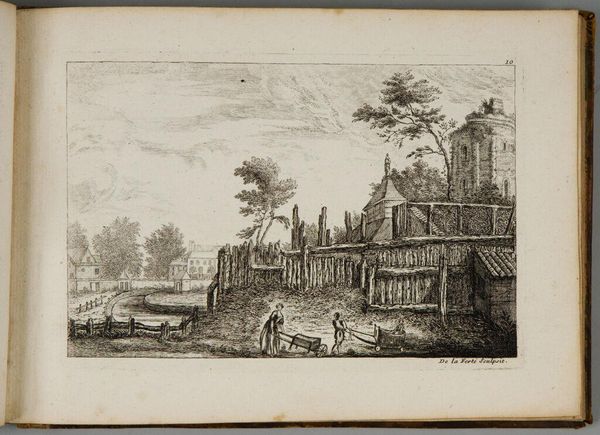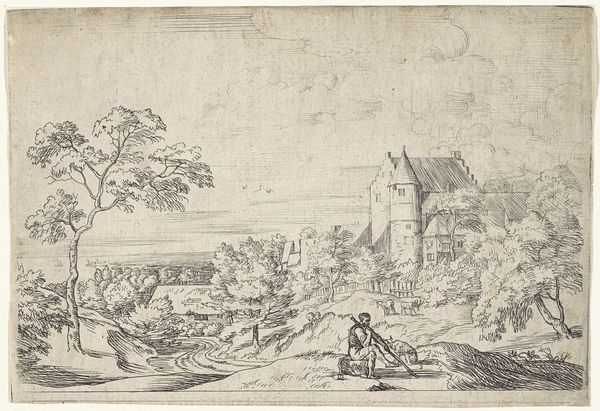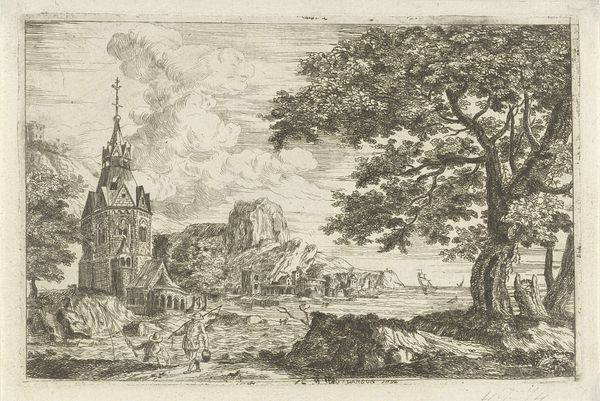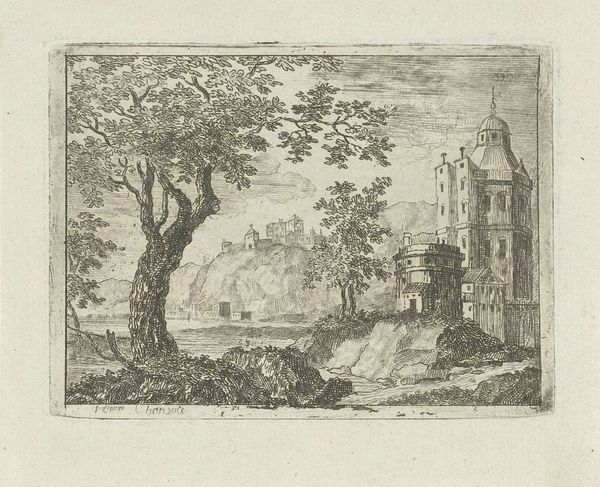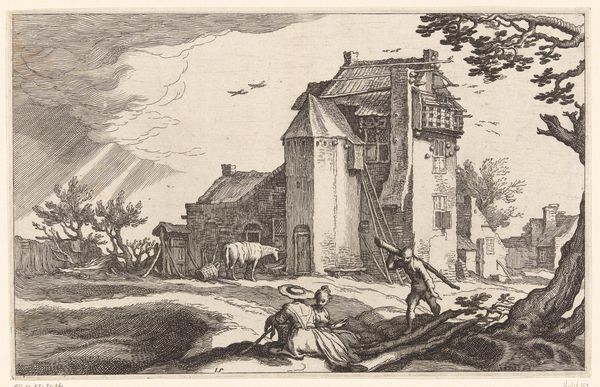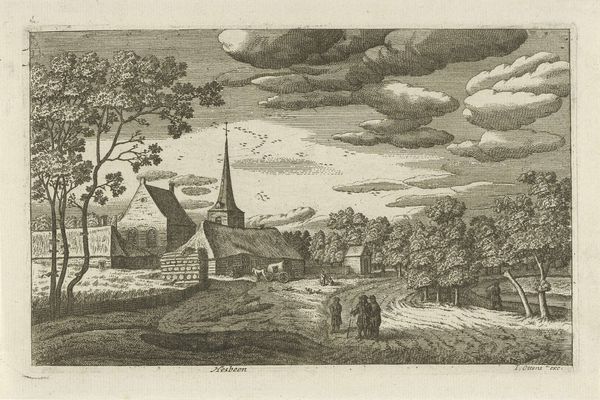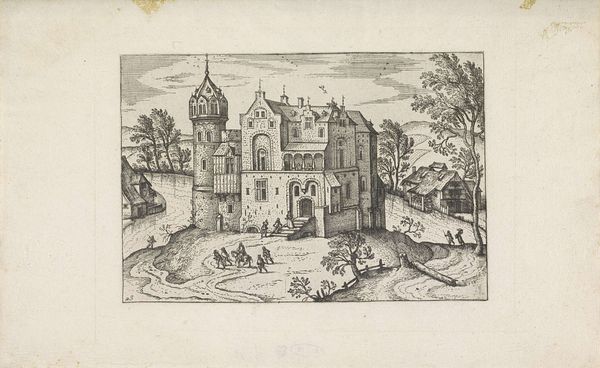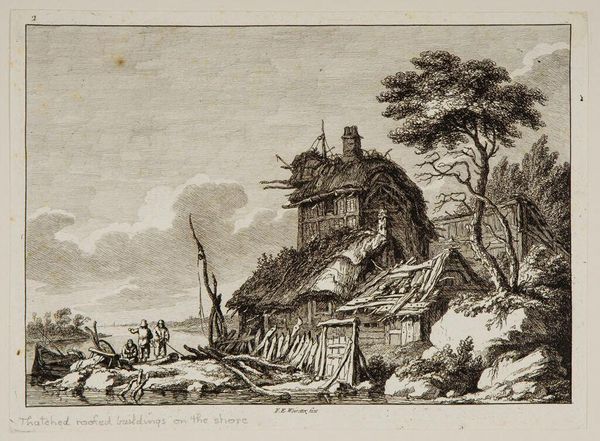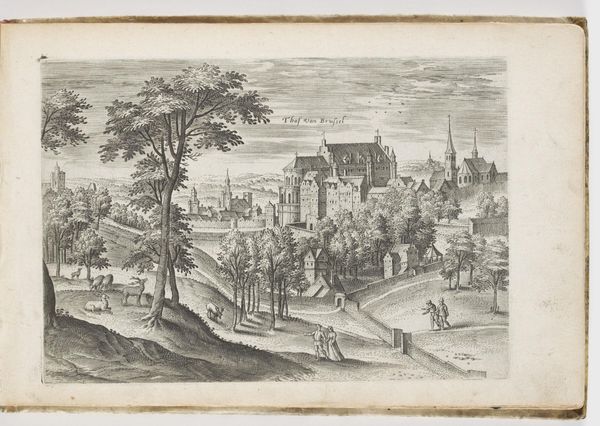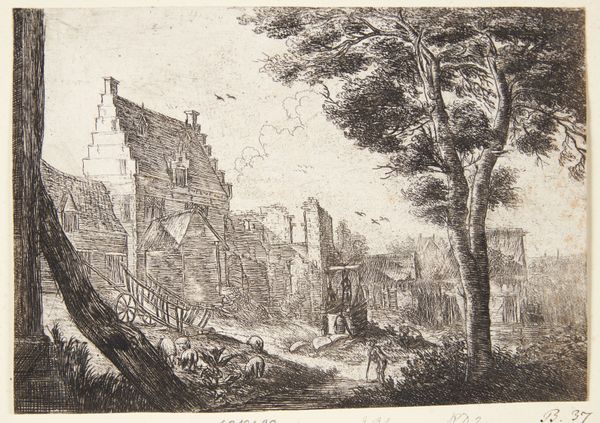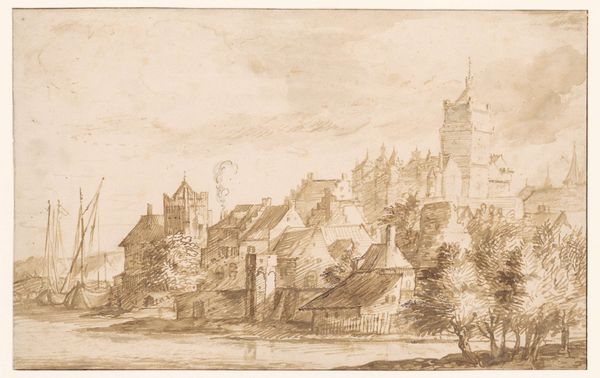
Dimensions: height 129 mm, width 205 mm
Copyright: Rijks Museum: Open Domain
Curator: This pen and ink drawing, “Dorpsgezicht met vissers” – or “Village View with Fishermen” - by Pierre Joseph Jacques Tiberghien, transports us to a tranquil, if slightly ominous, waterside scene. Scholars place its creation somewhere between 1765 and 1810. What's your immediate response to it? Editor: Well, the overall mood strikes me as melancholic. The stark contrasts created by the ink amplify a sense of quiet isolation. There's a loneliness about the figures in their small boat amidst those formidable towers. I wonder, what sociopolitical factors influenced the artist? Curator: Structurally, it is fascinating. Observe how Tiberghien uses the imposing architecture of the towers and their reflections to frame the vulnerable figures, thereby drawing attention to both near and distant planes in the composition. It has that classic opposition between the dark foreground and bright horizon. The strategic play of shadow and light constructs space through depth. Editor: I'm thinking of the fishermen, and wondering what community support existed for people in similar professions and social classes at the time this piece was rendered. Who controlled resources like the fish and access to marketplaces in this town, and who was disenfranchised? How were women integrated or marginalized? Those architectural pillars likely speak to power structures, ones impacting access to resources for folks beyond the elite. Curator: While your socioeconomic speculations are worthwhile, I'm more interested in Tiberghien's manipulation of form. Note the repetitive, almost rhythmic use of vertical lines in the towers mirrored horizontally across the water. This is not mere replication; it underscores a dialogue between the material world and its reflected self, opening interpretive possibilities for the work. The penwork and etching also speak to a romantic quality in the landscape tradition. Editor: And that replication might indicate not harmony, but a haunting duality in lived experience! We can see, in these rural or semi-urban areas, not just a physical reality of reflection, but also, I imagine, replicated forms of societal exploitation in water access and industry regulation by wealthy classes who defined fishing and village life at that moment. The etching almost seems to render a landscape held captive, as class differences tightened like a drawn net on these working lives. Curator: Interesting perspectives! Ultimately, Tiberghien leaves us much to interpret both inside and beyond its lines. Editor: Indeed, and by interrogating even ostensibly “simple” landscapes, we unveil complicated textures of social realities and aesthetic conventions.
Comments
No comments
Be the first to comment and join the conversation on the ultimate creative platform.
